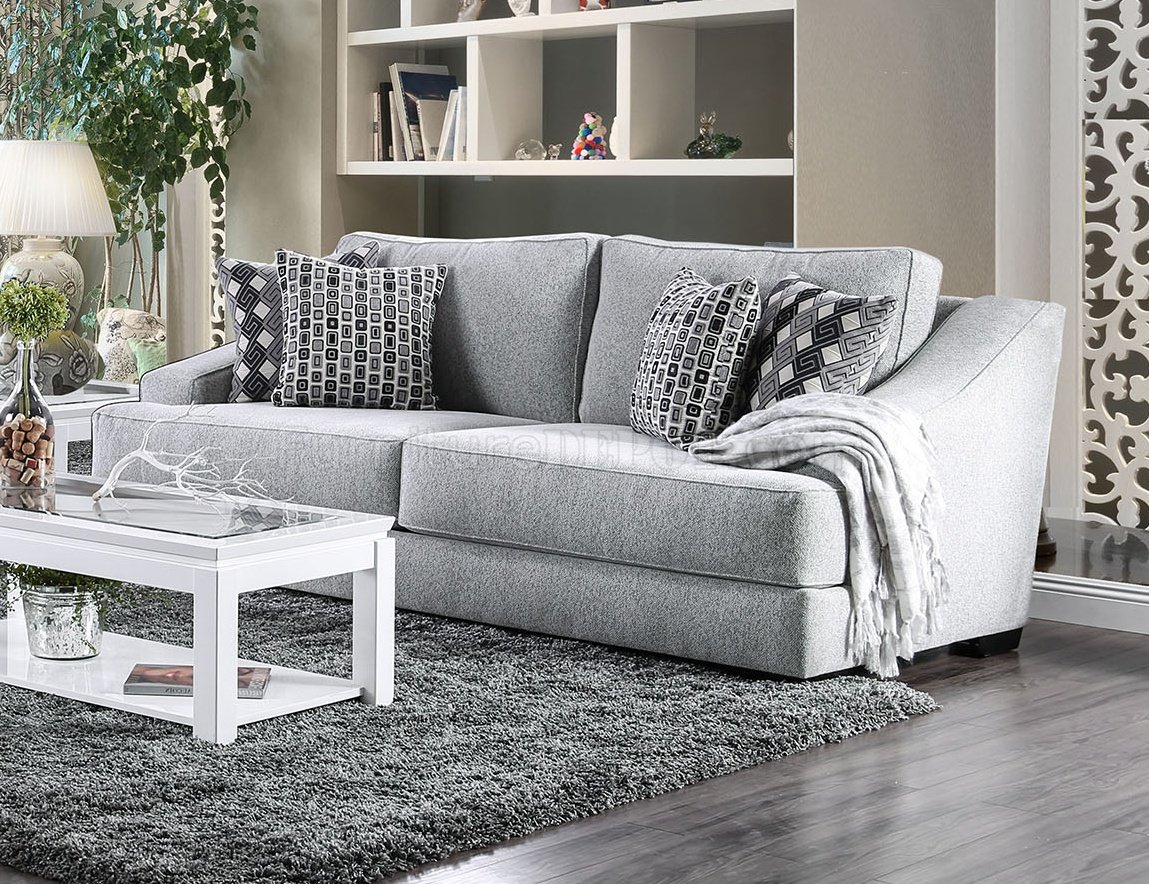Essential Guide to Sofa Cleaning for a Fresh Home
Keeping your sofa cleaned and refreshed can improve the aesthetic appeal of your home, and help create a relaxing environment. However, it’s not always an easy task to maintain it in pristine condition. You don’t only have to worry about obvious stains and spills.
There are hidden dust mites and allergens that can affect your health as well. But here’s some good news: cleaning your sofa doesn’t need to be a chore. With the right tools and techniques, this job can be simplified for even those who aren’t naturally inclined toward housekeeping.
Familiarize yourself with our essential guide on how to keep your sofa clean for a fresh home. Browse through keen-clean for a range of professional upholstery cleaning services tailored to suit your needs. Turn the page now and usher in a healthier, cleaner environment in your home.
Reading Sofa Cleaning Instructions
Your sofa’s life-span largely depends on your maintenance habits. Ensuring its cleanliness not only prolongs its use but keeps your home looking fresh.
Understanding the material is crucial before initiating any cleaning process. Whether leather or fabric, the cleaning code found on your furniture’s tag will guide you.
- Frequent vacuuming and light brushing: This basic step keeps your sofa free from dust and grime build up.
- Special care for fabric: Using the recommended cleaning code, clean only with appropriate solutions and techniques. Misuse can deteriorate fabric or cause stains.
- Vigilance against spills: Spot clean spills immediately with fitting cleaning solutions, working from the outside towards the center of the stain to avoid spreading.
- Professional cleaning services: When overall soiling reaches a point beyond home-care capabilities, turn to trusted professionals for thorough cleanup.
Cleaning codes commonly come in three types – W (water-based), S (solvent-based), and WS (both water and solvent). Understanding this can save your sofa from potential damage.
Sofa cushion covers should ideally remain unremoved during the entire process. Incorrect handling can cause shrinkage or other forms of harm to the aesthetic appeal.
In contrast, leather sofas require less aggressive methods. Regular dusting, keeping them out of direct sunlight and away from heat sources should keep them in peak condition.
Cleaning a spill on leather? Blot it quickly instead of rubbing. Rubbing can cause the stain to spread, thereby ruining the appearance of your proud possession.
Preferably use mild soap and distilled water for regular cleaning or dealing with stains on leather sofas. Also, you may always seek professional help for stubborn stains.
Remember, a clean sofa reflects a clean and bright home. So, follow these instructions religiously to keep your home lively and appealing every day.
Materials Needed for Cleaning
Cleaning your sofa requires a set of specific materials. These items enhance your cleaning experience and help maintain the quality of your furniture.
|
Item |
Description |
Use |
|
Dish Soap |
Common household product |
Brief soaking of stains |
|
Microfiber Towel |
Fabric towel used for drying and wiping |
Spot cleaning or drying the sofa |
|
Degreaser |
A potent cleaner that braves stubborn stains |
Deep cleaning fabric surfaces to remove embedded grease |
|
Upholstery Brush |
Dense brush designed to clean upholstery fabric |
Brush off dirt and dust before deep cleaning procedures |
Having these materials ready in your arsenal guarantees a sufficient deep-clean for your sofa. So, keep them handy for a clean, fresh home.
The best-performing cleaning products were identified by discreet lab tests and at-home observations. Only products with top performance, safety, ease of use made the cut.
You can find product recommendations for professional cleaning products online, thus ensuring effective and satisfying results.
Maintaining cleanliness through regular sofa cleaning aids in elevating your living space experience. Upholstery care is a vital aspect of home improvement.
Preparation for Sofa Cleaning
Your sofa’s regular cleaning should start with a gentle scrub using a soft brush. Follow it up by wiping down the furniture with a clean, smooth cloth.
Dealing with a spillage immediately eases the stain removal. It’s advisable to do a patch test first in an unseen spot.
- Check the manufacturer’s guidelines: Especially important if your sofa is still under warranty.
- Consider professional cleaning: They can often use stronger products.
- Treat spillages immediately: It is easier to remove fresh stains before they embed into the fabric fibers.
- Vacuum your sofa weekly: A routine vacuum helps prevent a build-up of dirt, dust and grime thereby keeping bacteria at bay.
- Avoid using alcohol or bleach: These substances could cause undesired discolouration or damage.
- Dodge oversaturating your sofa: Overdoing it while cleaning or disinfecting could cause permanent harm to your sofa.
Paper towels might leave unwanted residues on your sofa; opt for a soft cloth instead. While drying, resist the temptation to speed up the process with a hairdryer.
You can locate the fabric cleaning code on a sticker, tag, or label usually found under the seat cushions.
Spot Cleaning the Stains
Your goal in stain management is immediate attention. Keep away from heat and avoid applying pressure to prevent setting. Blot carefully with a clean cloth or napkin.
Removing Unwashed Stains
Handling pen stains? Rubbing alcohol is your friend. Gently blot, then apply pre-wash stain remover. Handle oil stains at home using talcum powder or cornstarch.
Tackling Common Stains
Treat blood stains with cold water. Beware of hot water; it can set the stain. Remember, cold water is always your safest option for most stains.
General Stain Removal Steps
Start by removing stain excesses with a paper towel or fork. Then pre-treat with suitable methods like dish soap for oily spots or liquid detergent for enzymes.
Specific Stain Types Remedies
Pre-treat blood and grass stains with liquid detergent and a toothbrush. Use dish soap on grease or oily marks, and powder detergents for bleachable spots.
Avoiding Fabric Damage
Avoid rubbing the material as it might cause fraying of fibers that can deepen the stain penetration. Use cold water to prevent the stains from setting.
General Sofa Cleaning Methods
Start by removing all throw blankets, pillows, and cushions from your sofa. Anything machine-washable should promptly make its way into the washing machine.
Next, it’s time to vacuum your sofa and cushions. Ensure to utilize the angled attachment for crevices and the wider one for larger surfaces of the couch.
Having vacuumed thoroughly, meticulously place your blankets and throw pillows back. A quick fluff for each pillow can add the finishing touch.
- De-clutter your sofa: Remove all detachable items including blankets, pillows, and cushions. Those suitable for machine wash should be cleaned accordingly.
- Vacuum regularly: Use appropriate attachments on your vacuum cleaner to effectively clean all parts of your sofa – from crevices to broader areas.
- Restore its elegance: After vacuuming, put back all blankets and throw pillows neatly. Ensure each pillow is fluffed up for an appealing look.
The aforementioned methods are simple yet effective ways of maintaining a fresh and clean sofa in your living space. Consistency is key in this process.
A well-cleaned sofa not only enhances the overall aesthetic of your home but also contributes positively to health and hygiene standards, ensuring a comfortable living experience.
Refreshing Sofa Cushions and Legs
With time, sofa fabrics wear out. A worn-out sofa steals the charm from your living space. An effective solution? Reupholster your fabric-covered furniture.
Removing the Old Fabric
First, flip your sofa upside down. This position allows you to see all staples securing the fabric. Proceed and eliminate these staples using a staple puller.
If there’s absence of staples, gently rip off stitches on the bottom of the fabric using a seam ripper. Continue this process until all fabric is detached.
Determing Fabric Size
Once the fabric is removed, spread it out. This helps in determining how many yards of new fabric you’ll require. Always add an extra yard to cushion any differences.
You can resort to cutting off your couch fabric if you don’t need it intact. Whether you’re using a seam ripper or a pair of scissors, the goal remains to remove the old fabric.
Reupholstering with Attached Cushions
Cut out the required size of fabric and drape it over the couch. Tuck it tightly around and into each cushion’s crevice. Remember to reinforce it with staples.
Avoid looser areas by stretching fabric across each component (back, arms, front) as you staple it to the wooden frame. Trim any excess material afterwards.
Add Fluff As Needed
Sagging cushions can get their firmness back by stuffing cotton batting or foam padding before completely tightening your upholstery with final staples.
This process does not only refresh your couch but also extends its service life in a unique way. Dive deeper in re-upholstery process here.
Removing Lingering Odors
Isn’t it a nuisance when your sofa continues to smell after a thorough clean? Let’s address this issue effectively.
How Can I Remove Lingering Body Odors?
First, concentrate on identifying areas that have strong body odors. Then, use a natural odor eliminator or deodorizer for these particular zones.
What Should I Do If I Can’t Wash Immediately?
Hang the items to allow them to dry before dropping them in the hamper if you can’t wash them promptly.
How Can I Boost The Effectiveness of Natural Deodorizers?
Apply your natural deodorizer generously and allow ample time for it to work its magic, absorbing all undesired scents before vacuuming up.
Any Quick Tips for Stubborn Smells?
Baking soda is a fantastic ally. Sprinkle generously over the surface, let it rest overnight and vacuum it up the next day.
Will Regular Cleaning Avoid Lingering Odors?
Yes, regular cleaning will reduce odor build-up over time. Consistency is crucial. Also, quick action on spills will prevent stubborn odors.
Celebrate Your Cleanliness
You’ve successfully navigated the journey of sofa cleaning, from preparation to odor removal. Now, you can enjoy your refreshed, stain-free sofa and its inviting aroma. Remember, regular cleaning not only extends your furniture’s life but also enhances your living environment. Congratulations on mastering the art of sofa hygiene!







